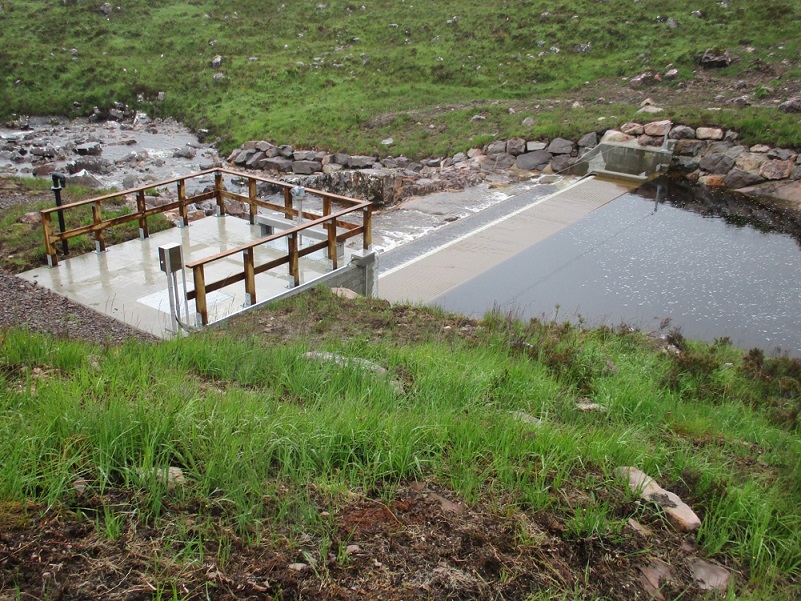
I have followed some of the Parkswatch blogs about the awful hydro tracks around Glen Falloch (see here) and seen them for myself from the hills. In July 2017 we were staying in Lochcarron and I was horrified to see a hydro scheme at Coulags at the start of the walk up Maol Chean-dearg. This is both a Wild Land and National Scenic Area.
Construction was in full flight and the mess was terrible – huge wide track; bare earth and displaced boulders; junk everywhere etc. But the notice promised that there would be a tidy–up; the track would not be retained but the existing walkers’ path upgraded and used for access to the intake for maintenance. I was sceptical!
We were back there this year and lo and behold, they have done what they promised.
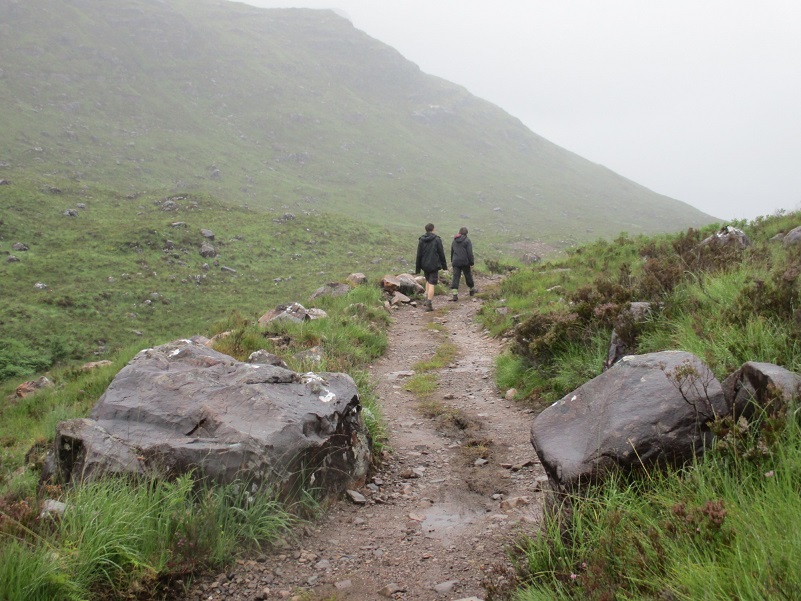
There’s hardly anything to show for it after a few hundred metres of wide vehicle track to the powerhouse right at the start. The intake is a mile upstream and the path is admittedly wider than before, but nothing like the eyesores here in the Loch Lomond and Trossachs National Park and elsewhere. The vehicle track has gone; they have re-landscaped it and re-planted clumps of vegetation over it which are taking well. Soon, I believe, there will be little evidence it was ever there.
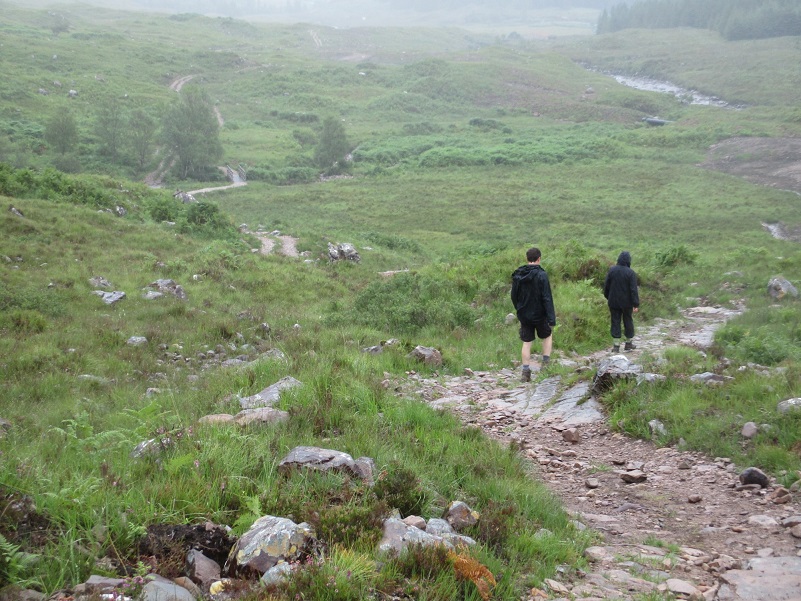
The photos show the track this July, less than a year after completion.
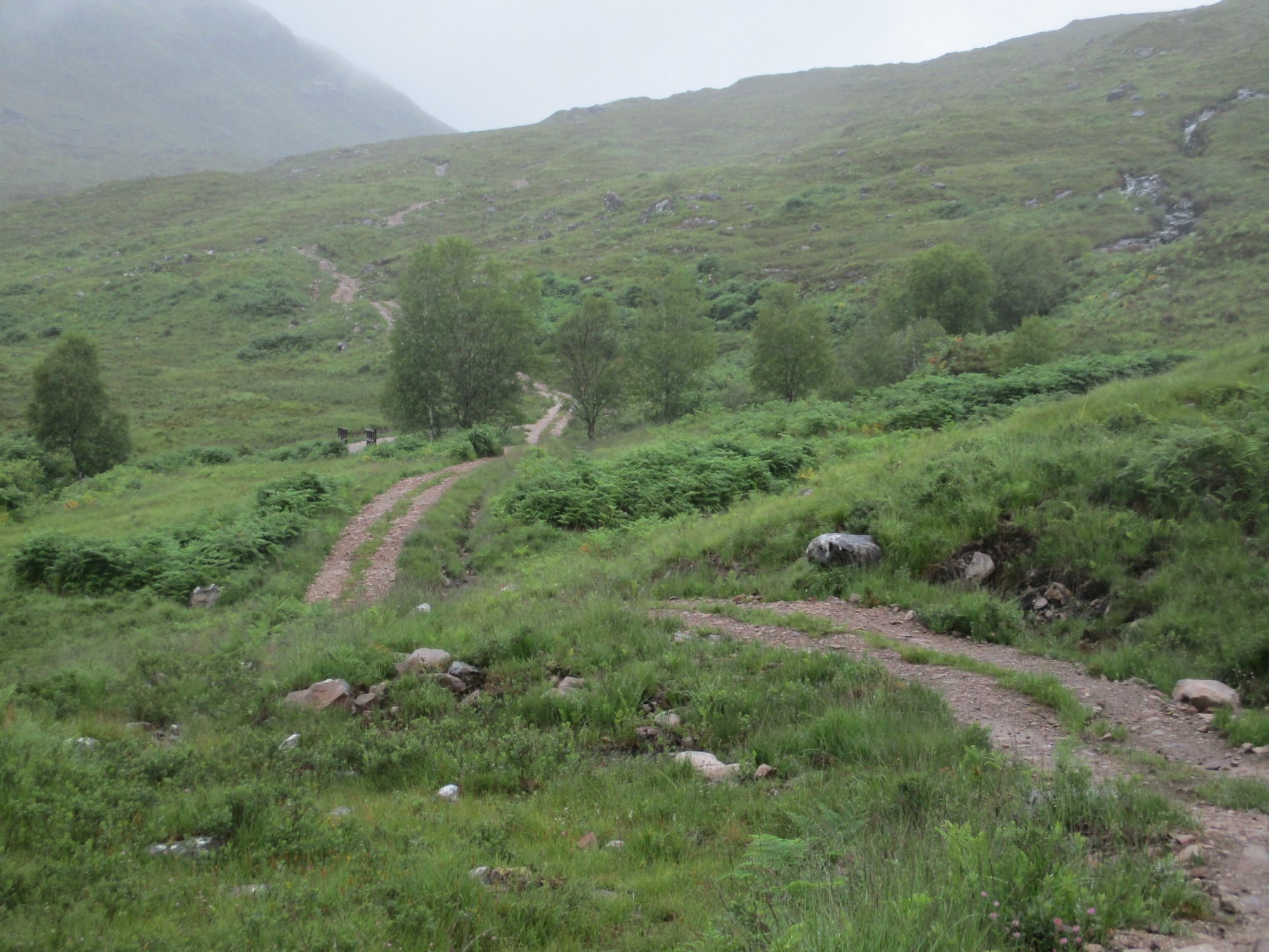
It certainly challenges the need for the wide tracks, so prevalent elsewhere, and a winding course is so much better.
We were on Fuar Tholl a few days later right above it in clear weather and you could barely see the track, unlike the view of the Glen Falloch ones from the Crianlarich hills. The scheme is invisible from the public road.
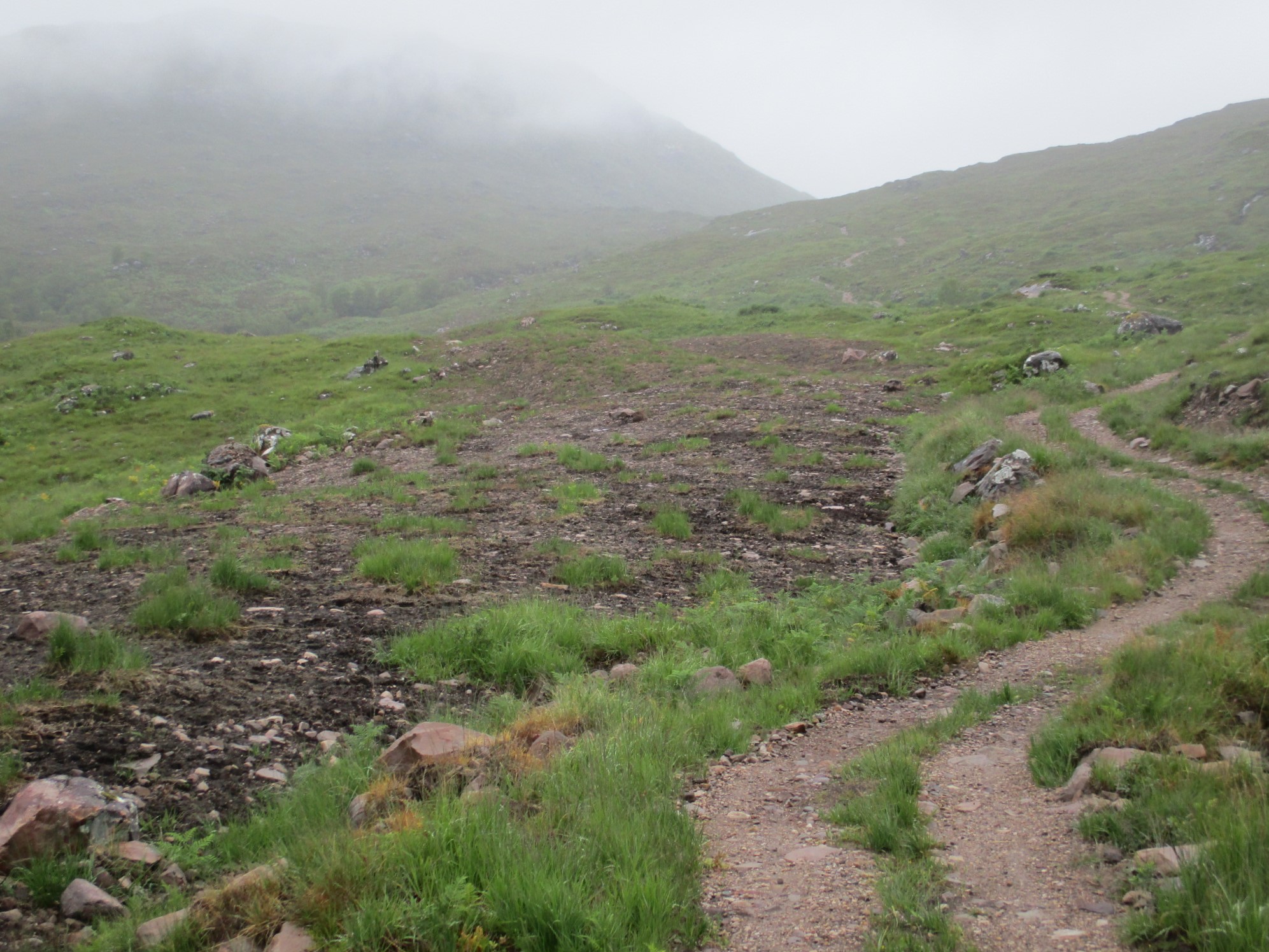 This photo shows the only bit where you are really aware of the track that was there last year during construction. Elsewhere it has virtually vanished. If they intend to use vehicles to maintain the intake/penstock they will be small enough to negotiate the upgraded footpath – quad bikes maybe..
This photo shows the only bit where you are really aware of the track that was there last year during construction. Elsewhere it has virtually vanished. If they intend to use vehicles to maintain the intake/penstock they will be small enough to negotiate the upgraded footpath – quad bikes maybe..
Personally I could just about live with small-scale hydro if all schemes were done as unobtrusively as this.
Editor’s Note
A reason for this success lies in the planning documents. The developer, Green Highland Renewables, restored the construction track using footpath standards and techniques:

And as John shows, they kept to their word. Quite a contrast to the Coulin hydro scheme (see here) just over the hill. Highland Council and our National Parks should learn from this!
An excellent piece, John- very heartening.
What has become clear over the past couple of years is that, in the main, it is the tracks, not the intakes or the turbine houses, which are the problem. There are a few simple rules which Planning Authorities could follow which would radically reduce the detrimental visual intrusion caused by hydro tracks. As Nick notes, all that is needed is greater care at the formal planning stage.
How problems could be reduced (PLANNING AUTHORITIES PLEASE, PLEASE READ):
1. Greater scrutiny should be given by Planning Authorities to what developers put in applications re the tracks based on the following ‘tests’. Where these are not met, Planning Authorities should raise the issues with the developer early on in the process and require the developer to submit alterations to their plans.
– Is a permanent vehicle track to the intake necessary at all? A well constructed footpath is adequate where intakes are reasonably small and accessible. There are examples of this.
– If the developer suggests that a permanent 4×4 track to the intake is required, and the Planning Authority accepts that a vehicle track is necessary, then the latter should question why an ATV track would not suffice. In some cases, it may be that the land owner is keen for a wider track for purposes unrelated to the scheme; this is unacceptable unless included in the application and this possibility be borne in mind by the Planning Authority.
– Where vehicle tracks are deemed to be essential, only the narrowest width for these should be approved (In line with the standard SNH guidance).
2. All new and restored tracks should have a central grass/vegetation strip. The pictures in the above post show what a major difference such strips make in reducing the detrimental visual impact.
3. Planning Authorities should require developers to advise them the moment the work has been completed. The Planning Authority should then carry out an inspection. It is appreciated that Planning Authorities are working under severe financial constraints but there are far too many instances where restoration has not been carried out properly.
4. All aspects of the above should be made formal conditions of consent and not simply be suggested to the developer as best practice.
With very little extra work, the whole situation could be greatly improved.
George
–
I wholeheartedly agree. I walked this particular track at Easter and, other than the ghastly stretch of track to the powerhouse, it was a pleasant experience and a huge relief to see that RoR could be done sensitively. Most importantly, the inner sanctum of the glen had been left untouched. What hope is there that plans to bulldoze up into the Grey Corries – 5 separate RoR schemes – will be done with anything like this sensitivity? Not a hope, from my reading of the initial scoping documents. If hydro schemes can’t be built to the Coulags specification they should not be built at all.